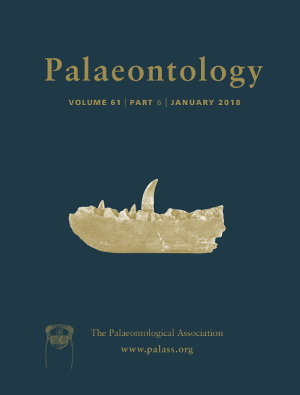Reg. Charity No. 1168330

Teredinidae are obligate xylophagous bivalves that colonize drift wood. They display a highly derived anatomy with a reduced shell; most of their body consists of soft tissues. Consequently, fossil teredinids mostly correspond to burrows, shells or small terminal aragonite structures called ‘pallets’. We report, from mid‐Cretaceous logs of the Envigne Valley, France, exceptionally preserved wood‐boring bivalves with silicified soft parts. After characterizing the wood, we report both the molluscs’ anatomy and their distribution inside the wood (using computed tomography). The 3D‐reconstructions reveal rarely preserved soft tissues (mantle, respiratory siphons, visceral pouch) but surprisingly no mineralized pallets. Envigne shipworms display neat dorsal condyles and a vermiform body plan, making them the oldest known Teredinidae. To document the evolutionary or taphonomic origin of this lack of pallet, the mineralization of these bivalves was investigated, and it is concluded that pallets could have dissolved prior to other carbonate components. From a survey of the fossil wood‐boring bivalves and their characters, we provide a time scaled origin of the main pholadoid clades supported in recent phylogenies. Since we found no correlation between the presence of pallets in Pholadoidea and their occurrence in the stratigraphic record, we suggest that their absence during the Mesozoic could be the result of a taphonomic bias related to the ‘calcite vs aragonite seas’ paradigm. The Cenomanian Envigne Valley was an estuarine to intertidal environment in which the Teredinidae appear to have selected their wood habitat on the basis of size but not type.